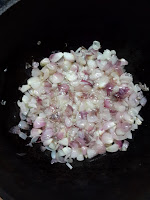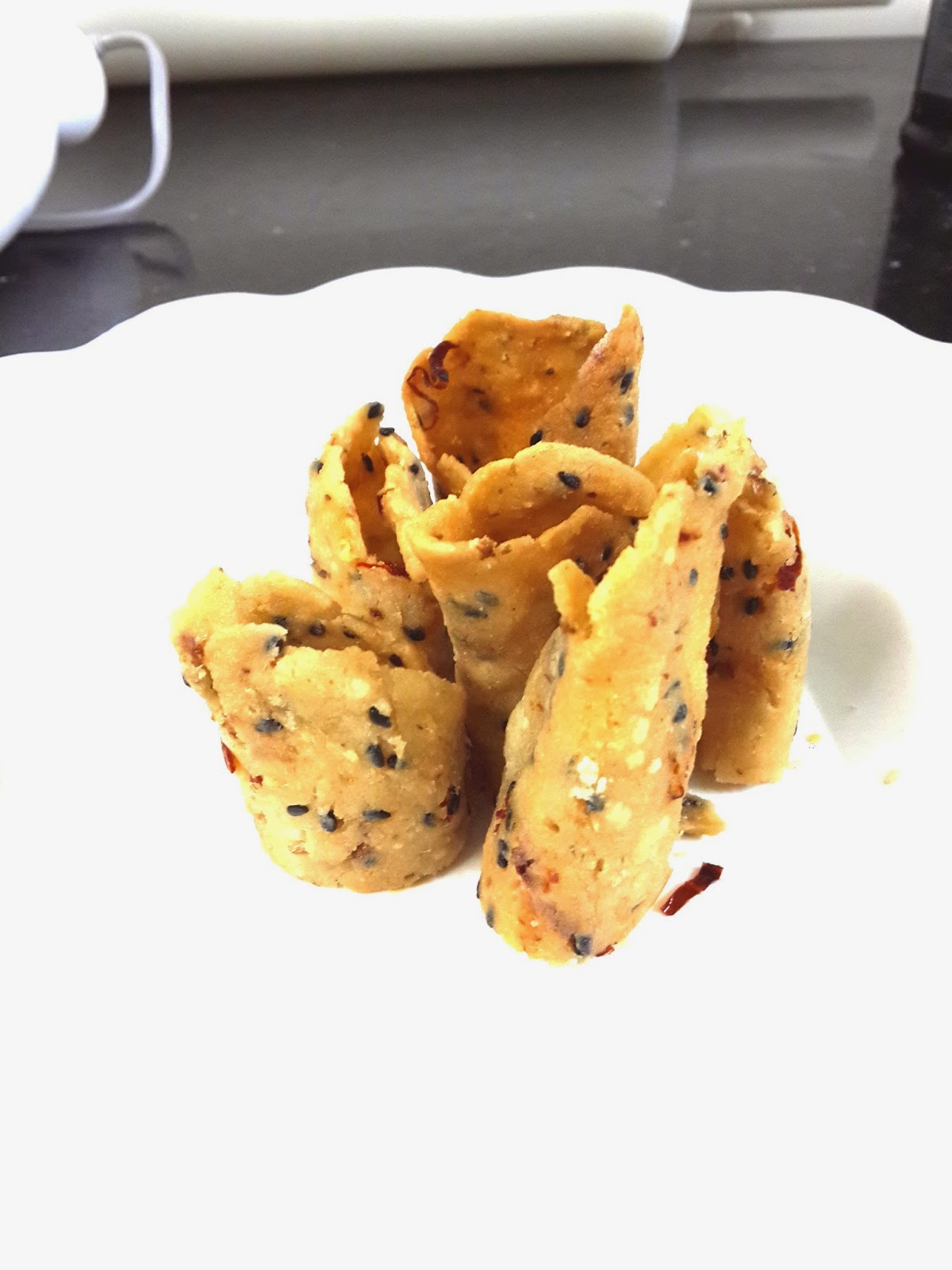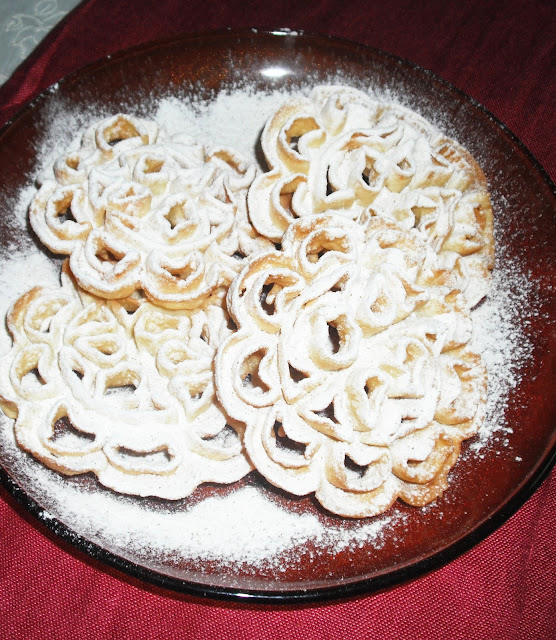Paella is a Spanish rice preparation home to Valencia. The original recipe includes chicken and rabbit meat and other goodies available in the region, such snails. This recipe has been customized to use locally available ingredients such as pork, chicken, fresh prawns and few other veggies. As regards the herbs, you can use either fresh rosemary or dried rosemary. Since Paella rice is not available in Kochi, i have used good quality raw rice. Please avoid using Basmati rice, because the aroma can sometimes remind you of biryani.
ingredients
Fresh unpeeled prawns - 500 gms
Chicken Breast - 2 or 3 (the more the merrier), diced into small pieces as seen in the picture
Pork bits with fat, thinly sliced - a handful (you can use bacon or pancetta)
Chilly powder or paprika - 2 tsp
White wine - 6 tbsp or Synthetic Vinegar - 1 1/2 tbsp
Carrots, diced - 2
Potato, diced - 1 small (optional)
Roughly chopped tomatoes - 2
Onion - 2 large, roughly chopped
Garlic - 15 small cloves (organic) or 10 plump cloves
Olive Oil or Vegetable Oil - 4 tbsp or more
Saffron - 1 generous pinch
Paella rice or raw rice - 4 cups (400 gms approximately)
Water - 8 cups
Salt to taste
ingredients to marinate the prawn and chicken
salt to taste
chilly powder - 2 tsp (if you want mild heat use paprika)
Vessel to be used - A wide pan (Uruli) or a Paella pan
Salt: Since the marinated meat and prawn has salt, add salt to the rice cautiously
method
Clean the prawns and marinate it with 3/4 tsp chilly powder and salt. Marinate the chicken pieces separately with the remaining chilly powder and salt.
Rice: If you are using Paella rice, you can add it directly to the preparations. I always like to wash and dry the rice for sometime. In case you are using raw rice, wash it 3 times and then put in a flat plate, to get rid of the moisture.
Heat oil in a pan and sear the chicken (in medium heat). When it is almost done remove it from oil. Make sure the chicken is coated with the marinade ( as seen in the picture). Similarly, fry the prawns , for about 2 to 3 minutes. Remove from oil. At this point, drain all the caramelised bits of chicken and prawns. Let only the oil remain in the pan. Add the thinly sliced pork and turn the heat to low. Allow the pork to cook slowly and release all the fat. Once the pork has caramelised, gently move it to the side of the pan and add the onion and garlic and saute it in medium heat. When the sides of the onion and garlic start browning move it to the side of the pan and add the carrots and potato. Saute it for a minute. Now bring all the ingredients to the centre of the pan and add the cleaned rice. Fry it gently along with the veggies and meat for about 2 minutes using a wooden spatula (Take care not to break the rice). Add the wine or vinegar and the red chilly powder or paprika and salt. Give a mix and then spread it across the pan. Pour half of the water (4 cup), alongside the side of the pan. Do not stir. Place the rosemary sprigs in 4 different directions: NSWE :).
When the rice has absorbed the water, add 4 more cups of the water in the same fashion.
Sprinkle the saffron strands. When the rice is almost done, add the fried prawn and chicken and give a gently mix. Taste it. The rice will be done in few more minutes.
Please note , the consistency of the rice is 'just to the right bite'. It will have one bite when you chew it, but it will be done with a little bit of moisture (as you see above in the pic). If you want a more soft consistency just cover the pan, after turning of the heat. But the rice will bloat a little bit, it wont be thin as you see in the image.
Get in touch with me for any doubts.




























